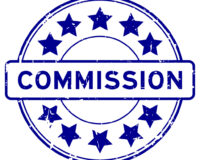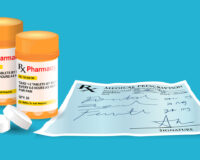Common Medicare terminology
If you are getting started in Medicare sales, there are plenty of terms that can be confusing. This list of common Medicare terminology can help you moving forward with your Medicare sales career.
Ancillary products
These are plans are offered by private insurance companies outside of Original Medicare or Medicare Advantage. Some examples of Ancillary plans include life insurance, LTC policies, stand-alone dental or vision as well as many other stand-alone insurance products.
Annual Enrollment Period (AEP)
During this time from October 15 through December 7 each year eligible beneficiaries can either enroll in or change their current Medicare coverage.
ANOC (Annual Notice of Change)
Each year beneficiaries receive a letter from the plan they are enrolled in. This letter explains any changes that the plan will have in January when the plan year begins. It lets beneficiaries know about cost and benefit changes. This letter arrives each fall so beneficiaries can decide if they want to change plans during the Annual Enrollment Period that starts in October.
Coinsurance
This is the amount, usually a fixed percentage, the insured must pay toward a covered claim after the deductible is satisfied.
Co-payment
The set fee a plan charges the insured at the time of each doctors visit or when you purchase prescription medication or other medical service.
CSNP (Chronic Condition Special Needs Plan)
A type of Medicare Advantage plan for beneficiaries with specific chronic conditions such as end stage renal disease (ESRD).
Deductible
The pre-determined amount you have to pay before your insurance coverage begins to pay for covered services.
Donut Hole aka the coverage gap
This refers to a gap in your Medicare Part D prescription drug benefit. This occurs when your prescription drug expenses exceed the initial coverage limit of your plan but have not yet reached the catastrophic coverage level.
Dual eligible Special Needs Plan (DSNP)
DSNPs are specialized Medicare Advantage plans that provide healthcare benefits to beneficiaries who have both Medicare and Medicaid.
Durable Medical Equipment (DME)
DME refers to medically necessary, prescription healthcare devices that Medicare Part B usually covers. This includes things like wheelchairs, infusion pumps and blood sugar monitors, to name a few.
Extra Help (LIS, Low-Income Subsidies)
These terms refer to a program that helps eligible Medicare beneficiaries with limited income pay for prescription drug coverage.
Formulary
The list of drugs that each Medicare plan covers. Each plan separates the drugs on the formulary by tier the tier corresponds to the price the plan member pays.
General Enrollment Period (GEP)
Eligible beneficiaries who miss their Initial Enrollment Period, can use this time to sign up for Medicate. The GEP runs from January 1 through March 31 and is only available to first-time Medicare enrollees.
HMO (Health Maintenance Organization)
A type of Medicare Advantage plan that requires the selection of a primary care physician. Your PCP will coordinate your care and needs to provide a referral if you need to see a specialist.
Hospice
This is a type of healthcare for terminally ill patients that provides pain management, counseling, hospital care, and more. Coverage for hospice is included in Part B of Medicare.
Initial Enrollment Period (IEP)
The time when eligible beneficiaries can first sign up for Medicare coverage. It begins three months before your 65th birthday and ends three months after. This is the time that most people enroll in Medicare.
In-network
When a provider (doctor, hospital, pharmacy, etc.) is in-network, they accept your Medicare plan. Beneficiaries who use in network providers are covered under their plan when you use in-network providers.
ISNP (Institutionalized Special Needs Plan)
A type of Medicare Advantage plan for people living in nursing home institutions.
Medicare Advantage (Medicare Part C, MA/MAPD)
A Medicare plan offered by private insurance companies. These plans cover everything that Original Medicare covers as well additional benefits like prescription drugs, dental, vision, fitness, etc. When they are called MAPDs they refer to Medicare Advantage plans that include prescription drug coverage.
Medicare Savings Programs (MSP)
MSPs are Medicaid-run programs. These programs help cover Medicare premiums and other cost-sharing expenses for people with low incomes. Eligible Medicare beneficiaries receive help with premiums, copayments, and deductibles.
Medicare Supplements
A separate, private insurance plan that helps pay deductibles, and copayments for Medicare covered medical services. These plans work with Original Medicare.
Open Enrollment Period (OEP)
This enrollment period is available only to Medicare Advantage plan enrollees. It runs from January 1 through March 31. Enrollees can use it to switch between Medicare Advantage plans or to go back to Original Medicare and a PDP plan.
Out-Of-Pocket Limit (MOOP)
Many Medicare plans place a maximum dollar amount beneficiaries can spend out of pocket on their healthcare costs each year. Once they surpass the out-of-pocket limit, Medicare-covered services are 100% covered.
PDP (Part D)
PDP plans provide coverage for prescription drugs and are offered by private companies.
PPO (Preferred Provider Organization)
A type of Medicare plan that provides care through a specific network of medical providers and facilities. Plan members can seek care outside the network, although it will usually cost more. In most cases, PPO plans don’t require referrals to see a specialist.
Special Enrollment Period (SEP)
Eligible Medicare beneficiaries with special circumstances are entitled to enroll in Medicare plans outside of the traditional enrollment periods.
TRICARE
This is a healthcare benefit for both active duty and retired service members as well as their families.
Take a look at some of our free agent training videos on YouTube
Join our team – click here for online contract
Click here for more images by this artist














Leave a Comment